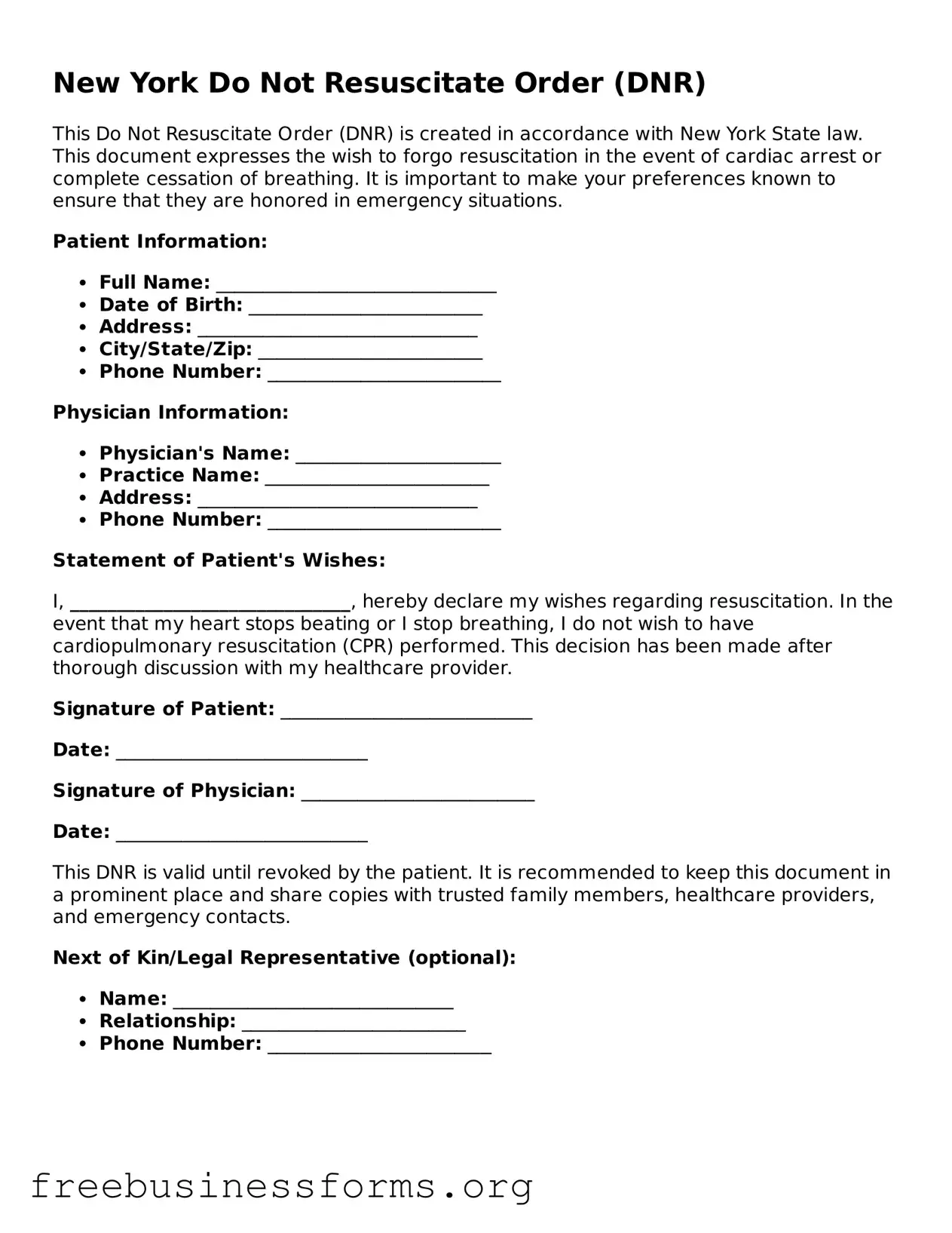New York Do Not Resuscitate Order (DNR)
This Do Not Resuscitate Order (DNR) is created in accordance with New York State law. This document expresses the wish to forgo resuscitation in the event of cardiac arrest or complete cessation of breathing. It is important to make your preferences known to ensure that they are honored in emergency situations.
Patient Information:
- Full Name: ______________________________
- Date of Birth: _________________________
- Address: ______________________________
- City/State/Zip: ________________________
- Phone Number: _________________________
Physician Information:
- Physician's Name: ______________________
- Practice Name: ________________________
- Address: ______________________________
- Phone Number: _________________________
Statement of Patient's Wishes:
I, ______________________________, hereby declare my wishes regarding resuscitation. In the event that my heart stops beating or I stop breathing, I do not wish to have cardiopulmonary resuscitation (CPR) performed. This decision has been made after thorough discussion with my healthcare provider.
Signature of Patient: ___________________________
Date: ___________________________
Signature of Physician: _________________________
Date: ___________________________
This DNR is valid until revoked by the patient. It is recommended to keep this document in a prominent place and share copies with trusted family members, healthcare providers, and emergency contacts.
Next of Kin/Legal Representative (optional):
- Name: ______________________________
- Relationship: ________________________
- Phone Number: ________________________
